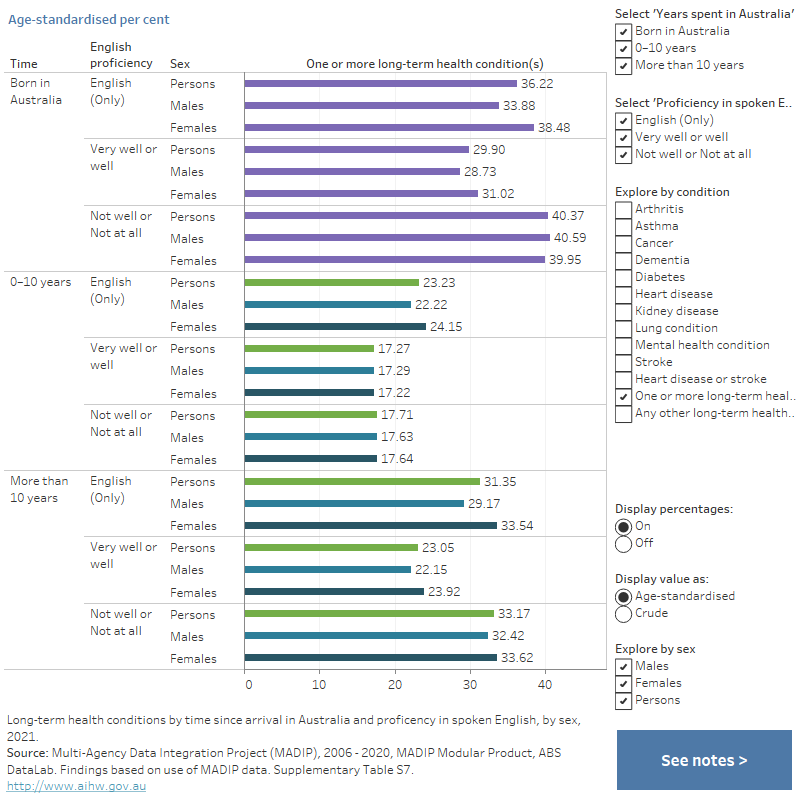Time since arrival in Australia and proficiency in spoken English
Figure 7: Long-term health conditions by time since arrival in Australia and proficiency in spoken English, by sex, 2021
This graph shows the crude and age-standardised percentages of people reporting long-term health conditions in the 2021 Census, by time since arrival in Australia, proficiency in spoken English and sex. Among the early arrivals, the age-standardised percentage increased as the proficiency in spoken English decreased for all individual conditions except asthma. Among the recent arrivals, people with low English proficiency had higher percentages of reporting some individual conditions than those for people who only spoke English at home. Overall, there were variations between each condition, time since arrival in Australia and proficiency in spoken English.

For early arrivals (people who first arrived more than 10 years before the 2021 Census), the prevalence of one or more long-term health condition(s) was higher for people with low English proficiency (33%) than for people with high proficiency (23%).
Early arrivals with low English proficiency also had a higher prevalence of some individual conditions than for people with high English proficiency, including dementia (1.3% for low and 0.5% for high proficiency, respectively) and mental health conditions (6.8% and 3.9%).
The pattern observed for early arrivals was similar for people born in Australia. In addition, there was a higher prevalence for people with low compared with high English proficiency for diabetes, heart disease, kidney disease, stroke and lung conditions.
For recent arrivals (people who first arrived 0-10 years before the 2021 Census), the prevalence of one or more long-term health condition(s) was similar for people who had high (17%) or low (18%) English proficiency .
The pattern for recent arrivals was similar for many individual conditions, except for asthma which was higher in recent arrivals with high English proficiency (2.8%) compared with low proficiency (1.7%). As seen for early arrivals, the prevalence of dementia and mental health conditions was higher for people with low compared to high English proficiency.


